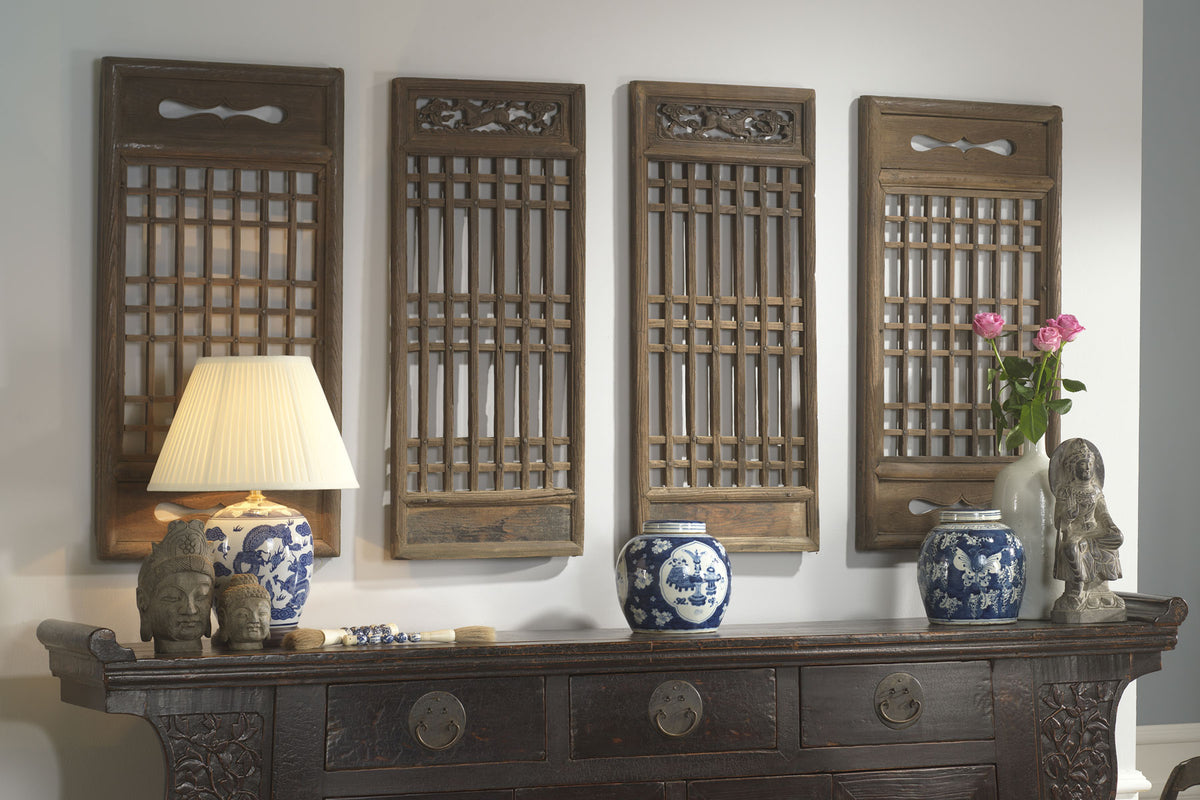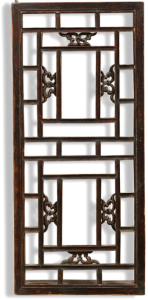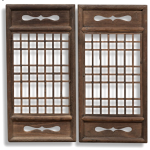
Chinese Carved Wooden Panels
As you know, we’re big fans of the antique carved wooden panels that we source in China and sell online and in our showroom. Our customers generally buy these intricately carved panels as unusual wall art, but in this post, we want to share a little of the history of these pieces, and look at how they would have been used in a traditional Chinese home.
A little background to Chinese wooden architecture
A fundamental achievement of Chinese wooden architecture is the load-bearing timber frame, a network of interlocking wooden supports forming the skeleton of the building. This is considered China’s major contribution to worldwide architectural technology.
Unlike western architecture, in ancient Chinese wooden architecture, the wall only defined an enclosure, and did not form a load-bearing element. Buildings in China have been supported by wooden frames for as long as seven millennia. The emergence of the characteristic wooden Chinese frame emerged during the Neolithic period. Seven thousand years ago mortise and tenon joinery was used to build wood-framed houses. (The oldest are at Hemudu site at Zhejiang). Over a thousand of these sites have been identified, usually with circular, square or oblong shaped buildings. During the Yangshao culture in the Middle Neolithic, circular and rectangular semi-subterranean structures are found with wooden beams and columns. Wooden beams or earth supported the roofs which were most likely thatched.

|
A major feature of Chinese homes were the carved wooden lattice panels either used as room dividers or internal and external window covers (like the more modern shutters). It’s this type of piece that you will find in the collection at Shimu - in a modern home they are a great way to add interest to any interior wall space. For example, the carved wooden panel on the left was once part of the interior of a Chinese house in Shanxi province, but today would make an interesting decorative element hung on a wall, or could even be fitted with glass to create an unusual mirror |
| The pair of wooden panels on the right date from 1900 and would once have formed part of an internal dividing wall in another Shanxi home. The central lattice panels are made with mortise and tenon joints, still secured with the original nails. |  |
Yin Yu Tang at the Peabody Essex Museum
At the Peabody Essex Museum, Massachusetts, the amazing spectacle of a 200 year old Chinese house can be viewed. Named ‘Yin Yu Tang’, the Huang family ancestral home was brought to America and reassembled. Looking around the house, either by taking the interactive online tour or in person, allows a rare perspective on Chinese art, architecture, and culture.
The house was built during the Qing Dynasty (1644-1911) by Huang, a prosperous merchant. It was a stately sixteen-bedroom house in China’s southeastern Huizhou region.

The house was oriented in the village according to principles of feng shui to ensure a harmonious relationship with the landscape and was constructed according to local building traditions and customs. Coins were placed under structural columns to bring prosperity to the home’s inhabitants. The first floor bedrooms have intricately carved lattice windows that look out onto two fish pools in the central courtyard. These details tell as much about the aspirations, identity, and creative expression of the Huang family as they do about the architectural heritage of the region.
The family’s well-documented genealogy and the accumulation of furnishings passed down through eight generations offer the opportunity to understand historical changes in China as they affect individuals in their daily lives and cultures on a global scale. If you ever get the chance to visit Massachusetts, we’d strongly recommend a visit to the Peabody Museum to see Yin Yu Tang – it’s certainly on our bucket list!For now, why not visit the Shimu website for a stunning selection of antique wooden panels and screenssourced from across China. All are made with great craftsmanship and would make a beautiful talking point in any modern home.





Leave a comment